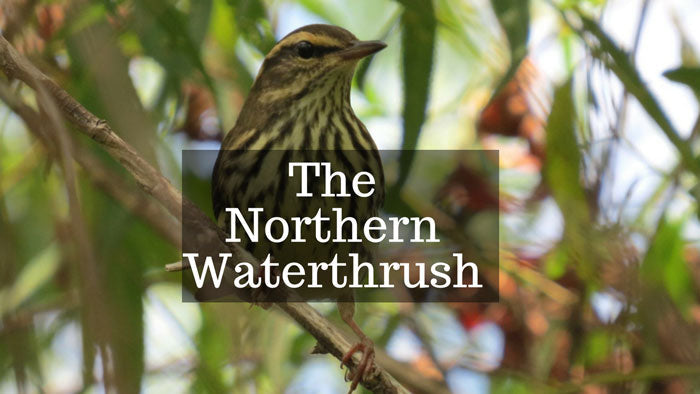Offer
Provide additional details about the offer you're running.
Provide additional details about the offer you're running.
Provide additional details about the offer you're running.

Small yet vocally proficient, the northern waterthrush is a unique and interesting bird to observe. Favouring dense cover, these birds can at times be a challenge to locate but once found, can provide spectators with an interesting glimpse into their daily activities.
Bob was lucky enough to spot one around his home earlier this week just ahead of their anticipated exit as they begin their long trek back down to the islands of the Caribbean and Central and South America for the winter months.
In light of this recent sighting and in hopes of hearing additional reports from birders in the area, we wanted to highlight this interesting bird and hope that each of you has a chance sometime in the future to take part in observing one of them.
Just as their name would suggest, these little songbirds are often spotted in and around areas that feature water. That can range from small, slow-moving streams, to lakes, rivers, and tributaries.
Moving around on foot most of the time, spending time around bodies of water and swampy areas truly will increase your chances of spotting one.
Geographically, they can be found across much of Canada during the summer months, a great portion of the United States while they migrate and finally end up in the tropical locales of the Caribbean Islands, Central America, and northern South America.
These small birds are often generally brown in appearance and feature unique striping patterns across their cream-colored chest. One sure-fire way to identify these birds is by the unique streaks found atop of this bird’s head, going from the base of the beak straight to the back of the bird’s neck.
If you can get close enough (go slow), you should also be able to notice the faint yellow-white eye stripe these birds also display.
When it comes to body language, these birds can often be found skipping across the ground, bobbing and teetering along as it walks.
Aggressive, ringing, loud, and prominent are all descriptive words used to describe the song of the northern waterthrush. Their song begins with a number of phrases all in the same pitch and is quickly followed by a barrage of short, rapid phrases as the song slowly drops in overall pitch.
High Quality Blend